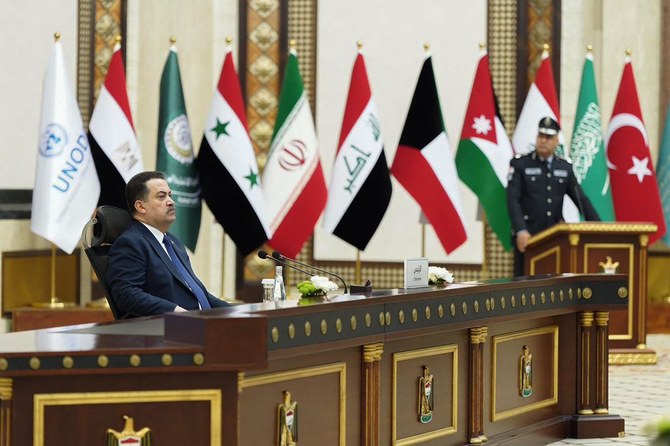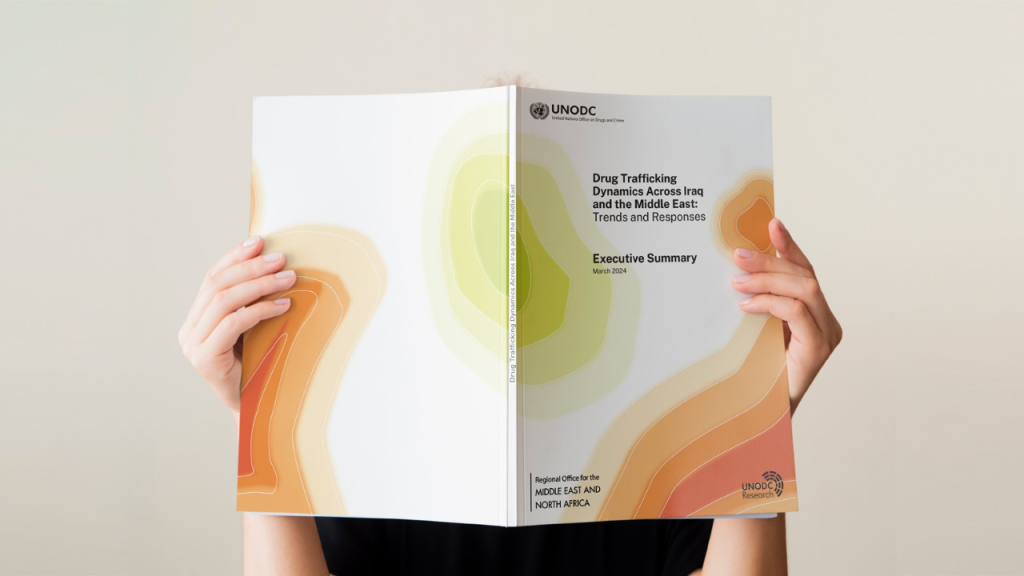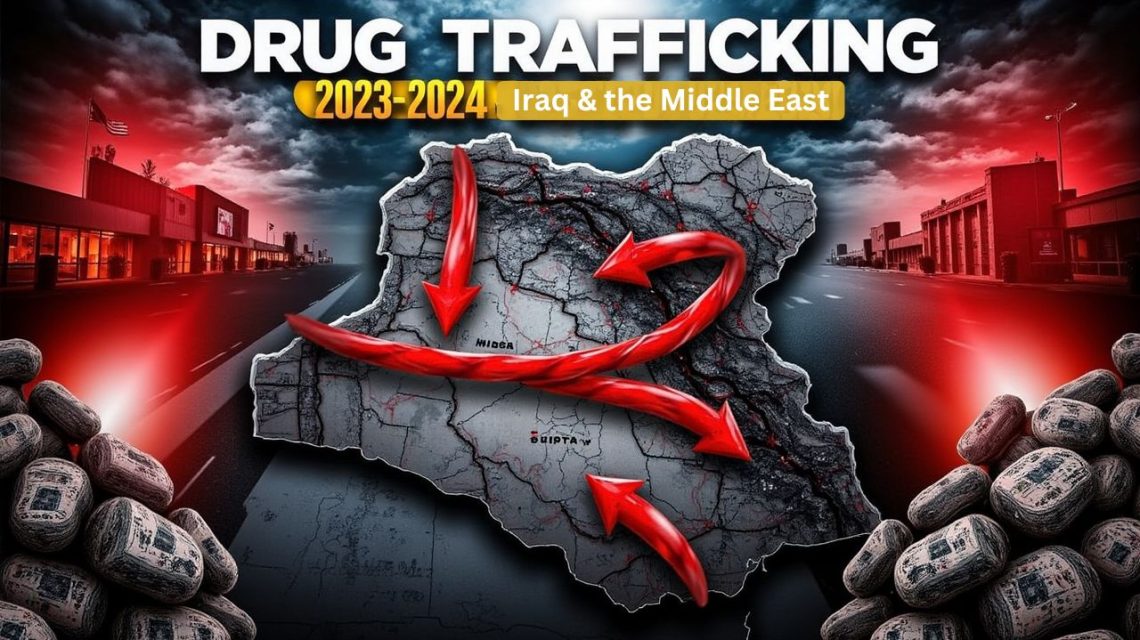The Middle East, a region already grappling with complex political and social issues, is facing a growing crisis, a surge in drug trafficking. From bustling cities to remote border areas, the flow of illegal narcotics is creating a web of problems that threaten stability and security. Iraq, in particular, has become a key transit point and a growing market for these dangerous substances. Let’s take a closer look at the trends, threats, and challenges that are shaping this alarming situation.
The Rising Tide: Drug Trafficking Trends
In the past year, the region has seen a noticeable increase in the volume and variety of drugs being trafficked. Several factors contribute to this surge:
Opioids and Captagon: Opioids, especially heroin, and Captagon, a stimulant popular in the Middle East, remain major concerns. Captagon, often produced in the region, is cheaply made and highly addictive, making it a dangerous and profitable commodity.
Synthetic Drugs: The rise of synthetic drugs, like methamphetamine, is a worrying trend. These drugs are often easier to produce and transport, making them a challenge for law enforcement.
New Routes and Methods: Traffickers are constantly adapting, using new routes and methods to move their goods. This includes using sea routes, exploiting porous land borders, and even using advanced technology like drones.
Increased Demand: Economic hardship and social instability in many parts of the region have led to increased demand for drugs, creating a lucrative market for traffickers.

Iraq: A Key Transit Point and Market
Iraq’s strategic location, bordering several countries, makes it a critical transit point for drug trafficking. The country’s ongoing instability and porous borders create opportunities for smugglers to move drugs with relative ease.
Border Challenges: Iraq’s long and often uncontrolled borders with Iran, Syria, and Turkey are major entry points for drugs. The lack of adequate border security and the presence of armed groups make it difficult to stop the flow of narcotics.
Internal Distribution: Once drugs enter Iraq, they are distributed throughout the country and often moved to other parts of the region. This internal distribution network is complex and difficult to dismantle.
Growing Domestic Market: Sadly, Iraq is also experiencing a growing domestic drug problem. The stress of conflict and economic hardship has led to increased drug use, particularly among young people.
Regional Threats: The Ripple Effect

The drug trafficking problem in Iraq has far-reaching consequences for the entire region:
Increased Violence: Drug trafficking is often linked to organized crime and armed groups. The competition for control of drug routes and markets can lead to violence and instability.
Funding Terrorism: Drug trafficking is a major source of funding for terrorist groups and other criminal organizations. The profits from drug sales are used to finance their operations, further destabilizing the region.
Public Health Crisis: Increased drug use leads to a public health crisis, with rising rates of addiction and related health problems. This puts a strain on already limited healthcare resources.
Weakened Governance: Drug trafficking undermines the rule of law and weakens government institutions. Corruption and bribery are often used to facilitate the movement of drugs, eroding trust in government and law enforcement.
Social Disruption: Drugs destroy the fabric of society, by increasing crime, and breaking down families.
Cross-Border Challenges: A Collaborative Effort Needed
Tackling the drug trafficking problem requires a coordinated effort from all countries in the region. Several cross-border challenges make this difficult:
Lack of Cooperation: Political tensions and mistrust between countries can hinder cooperation on drug enforcement. Sharing information and coordinating operations is essential, but often difficult.
Porous Borders: The long and often uncontrolled borders in the region make it difficult to stop the flow of drugs. Improved border security and cooperation are needed.
Differing Laws and Policies: Countries in the region have different laws and policies regarding drug enforcement. This can create loopholes that traffickers can exploit.
Resource Constraints: Many countries in the region lack the resources and expertise to effectively combat drug trafficking. This includes a lack of trained personnel, equipment, and technology.
Complex Political Landscape: The complex political landscape of the Middle East, with its many conflicts and power struggles, makes it difficult to address the drug trafficking problem.
Steps Towards Solutions

While the challenges are significant, there are steps that can be taken to address the drug trafficking problem:
Strengthening Border Security: Investing in border security technology and training personnel to improve border control is crucial.
Improving Regional Cooperation: Encouraging cooperation and information sharing between countries in the region is essential. This includes joint operations and intelligence sharing.
Addressing Root Causes: Addressing the root causes of drug trafficking, such as poverty, unemployment, and social instability, is important.
Investing in Public Health: Investing in public health programs to address drug addiction and provide treatment is crucial.
Combating Corruption: Fighting corruption and strengthening government institutions is essential to undermining the drug trade.
International Support: International support and assistance are needed to help countries in the region build their capacity to combat drug trafficking. This includes financial aid, training, and technical assistance.
Community Involvement: Working with communities to raise awareness about the dangers of drugs and to promote alternative livelihoods is important.



 SDG 17 GOAL : Samsung’s Collaborative Drive- Advancing Global Goals Through Innovation, Challenges, and Transformative Partnerships
SDG 17 GOAL : Samsung’s Collaborative Drive- Advancing Global Goals Through Innovation, Challenges, and Transformative Partnerships
good!
wonderful!
wonderful!
super!